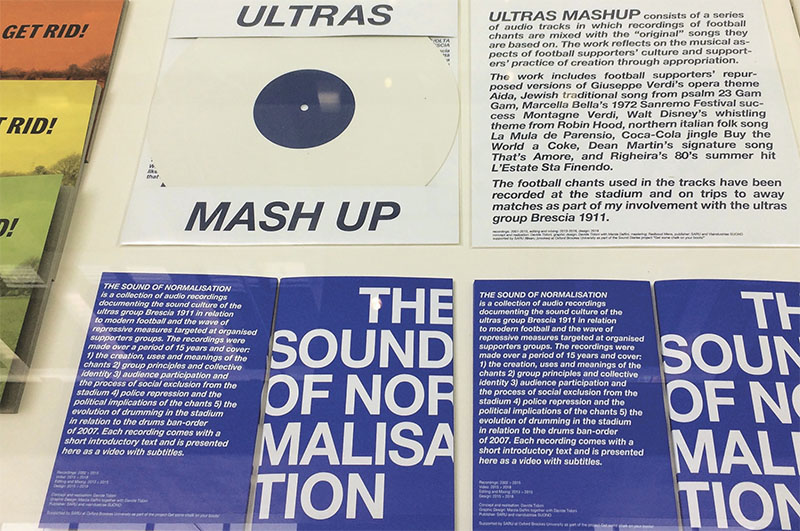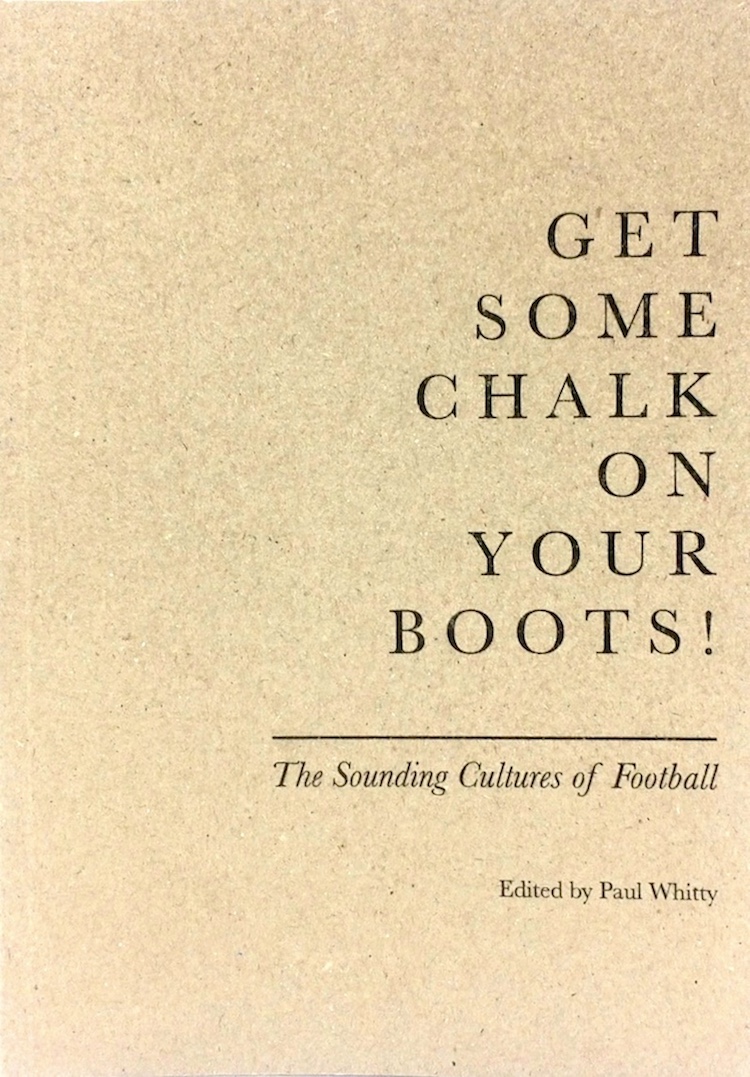
Get Some Chalk On Your Boots is both an amusing and poignant project that shows football as “a sport that thrives on the physical energy of sound”
8 October ~ Be it the crowd roar that encroaches through the open windows of a stadium’s residential neighbours or the Sunday morning thuds and shouts that emanate from beyond countryside hedgerows, a football match in progress often reveals itself more through sound than sight.
A research project based at Oxford Brookes University, instructively named Get Some Chalk On Your Boots!, is seeking to explore these everyday yet evocative “sounding cultures” of the game. Led by Paul Whitty, a director of the university’s Sonic Art Research Unit, the study has so far encompassed a one-day symposium, a public exhibition held in Oxford throughout the duration of the World Cup and a number of published print and audio works.
The wide-ranging remit of this sonic investigation of what Whitty refers to as “a sport that thrives on the physical energy of sound” has brought together a geographically and politically diverse range of artists and works. Duncan Whitley’s GD Parada drops the viewer into the dust-kicking choreographic scuffle of sessions on the arid training pitch of Portuguese village club Grupo Desportivo de Parada, while Ronnie Close’s documentary film More Out of Curiosity captures at close quarters the emphatically audible protests of Al Ahly fans in the months following the 2012 Port Said Stadium attack, and Davide Tidoni’s multiple works draw on his lengthy observational relationship with the ultras of Brescia. ULTRAS KARAOKE, which superimposes on-screen the lyrics of the Curva Nord’s songs with a synthesised midi-track backing of the original tunes, provides when exhibited an almost whimsical counterpoint to the fully realised and throated defiance of their chants against political and spatial repression on the adjacent sets of headphones.
It is through those pieces inspired by Britain’s places of football that a common thread runs in which the absence of sound is as significant as its presence. Whitty’s own study, Get Rid!, amplifies and transcribes the distinctive but usually ephemeral on-pitch conversations – “Ref, how long have we got? I want to go and have a beer” – of the Aylesbury and District, North Berks, and Oxfordshire Senior Football Leagues. In both its listenable and readable elements, however, equal weighting is afforded to the artist’s visits on days when the fields have returned to their quotidian lives as the realm of dog walkers and joggers, and the soundtrack is one of birdsong and distant traffic. So it is that football’s status in such recreational locations is reinforced as being simultaneously long-established and temporary, a message made more pertinent by the context of the nationwide threat from developers to community playing fields.
This notion of the transience of a sense of place around football’s presence or absence extends to those works which consider the soundscapes of the professional game. Laurence Crane’s The Manor Ground combines auditory recollections of the younger author’s visits to Oxford United’s former home – the stamping of feet on a cold day, transistor radios in the crowd, the wind through the trees beyond the ground’s perimeter – with a present-day return to the footprint of those terrace perspectives, now under a private hospital and gated residential development and soundtracked instead by car alarms and passing bicycles. Crane notes that an unintended outcome of his artistic process was the revelation of the tricks played by faded memory, providing an illuminating contrast with another of Whitley’s works which was undertaken along a similar theme 60 miles away in Coventry.
Using a binaural technique in which microphones located in the artist’s ears capture not only sounds but their relative distance and location, therefore enabling playback that simulates real-life experience, This is Highfield Road comprises 141 selected snippets recorded in spring 2005 from block WT6 of the West Stand. As the narrative of the stadium’s final six games unfolds, the present-day listener is immersed from all directions: the “get into ’em” calls of the season ticket holder in the row behind, the chants from the away fans to the left, the echoing Tannoy imploring fans not to invade the pitch at the final whistle and the inevitable jeers in response.
Both amusing and poignant, Whitley’s archive – which was recently launched online at thisishighfieldroad.net – defies its highly personal origins. Like all of the projects under the Get Some Chalk umbrella, it will resonate with anyone who has ever acknowledged or appreciated the sonic and spatial rituals of football’s presence in a community. Ffion Thomas
Get Some Chalk On Your Boots! is an anthology of short essays about football and the sounds of the everyday, and is available from the WSC shop for £7.50. You can find out more information about the project at getsomechalkonyourboots.co.uk
This article first appeared in WSC 378, September 2018. Subscribers get free access to the complete WSC digital archive – you can find out more here
Photo by Paul Whitty
